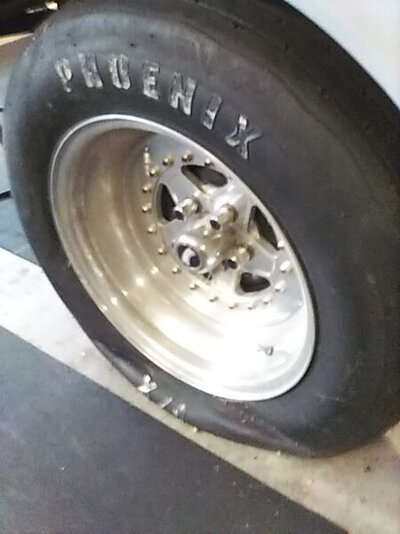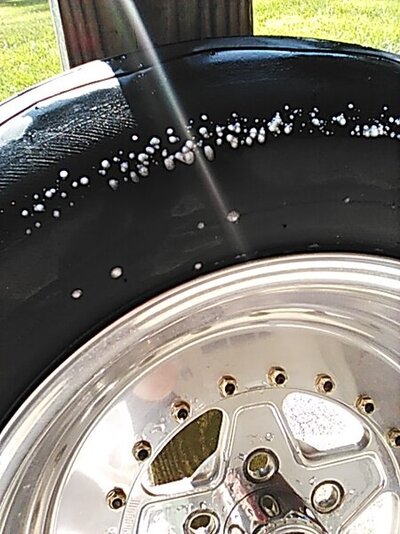After years I would like to find solution to keeping Phoenix front runner tires from going flat after several days. I would like to inner tube them and be done with it. Probably Monocoque 2-piece rims causing the leak. I have Phoenix 4.5/26.0-15 tires on now, thinking of going to 4.5/24.0-15s. They are tubeless tires.
A metal stem tube (for NHRA rules I believe) or any for that matter of this size seems difficult to find. Can anyone steer me? Here's the worst offender. Been flat for so long the tire just sucks and needs replacing. My rears are already tubed.

A metal stem tube (for NHRA rules I believe) or any for that matter of this size seems difficult to find. Can anyone steer me? Here's the worst offender. Been flat for so long the tire just sucks and needs replacing. My rears are already tubed.


















